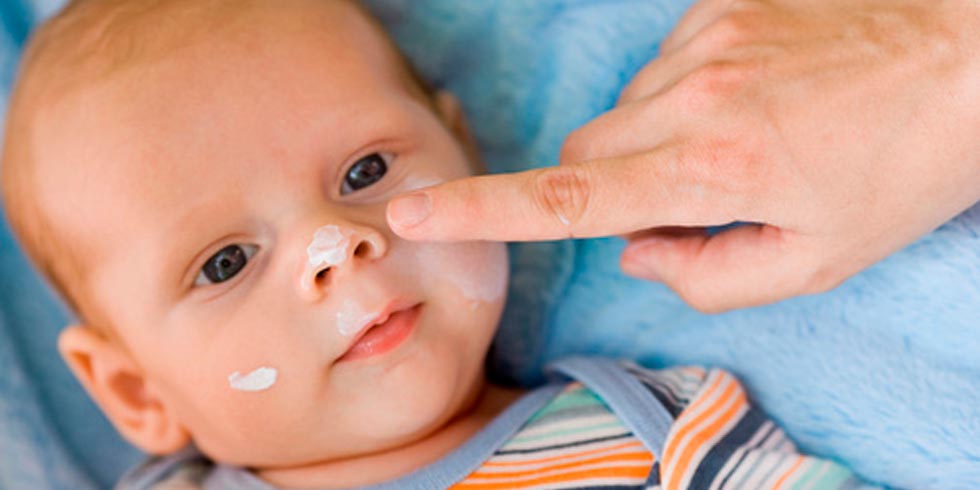
PSYCHOLOGICAL IMPACT ATOPIC DERMATITIS
Hello everyone! Welcome to a new entry in our Atopic Dermatitis Blog. Today we are going to deal with a

Hello everyone! We are back in our area dedicated to Atopic Dermatitis. This time we would like to share with you some important tips for caring for children’s skin.
Baby skin is five times thinner than adult skin and gradually increases in thickness until puberty. Both the epidermis and the stratum corneum are thinner, the latter being responsible for the barrier function. In young children, the stratum corneum is particularly permeable to chemical agents and more sensitive to solar radiation.
The ratio of skin surface area to body weight is three times higher in neonates, increasing the risk of absorption of toxic substances. Unlike adults, babies’ skin has a neutral pH and little buffering effect. This combination, together with the fact that the stratum corneum is so thin, makes babies’ skin more susceptible to the development of pathogenic micro-organisms.
In addition, babies’ skin contains fewer antibodies, which means that any lesions that are not properly treated can increase the risk of infection. It is important to take special precautions when caring for babies’ skin, using gentle, baby-specific products, avoiding excessive sun exposure and maintaining good hygiene to prevent infection. In the event of any injury or skin problem, it is advisable to seek appropriate medical attention.
It is very important to understand that young children are particularly sensitive to extreme temperatures or changes in temperature. They are more vulnerable to UV rays due to their low pigmentation and limited melanocyte activity. They therefore need special care and sun protection when outdoors.

As we mentioned in our first blog post, What is atopic dermatitis and how to recognise it, atopic dermatitis is one of the most common skin conditions in childhood, affecting between 10% and 20% of children. In 1 in 3 children, the condition resolves during childhood.
Therefore, proper management of atopic dermatitis in children involves carefully following a series of guidelines that focus on skin care, protection and hydration.
In summary, the combination of a proper baby skin care routine, social protection and the use of specialist products such as Dermcontrol will go a long way towards preventing flares and maintaining healthy skin in cases of atopic dermatitis.
If you’ve found our recommendations for atopic dermatitis skin care useful, don’t miss our next publications. We want to be your main source of information to answer any questions you may have.
See you soon!
INVES BIOFARM team
To celebrate the launch of DERMCONTROL, we are offering you a
special launch price with a

Hello everyone! Welcome to a new entry in our Atopic Dermatitis Blog. Today we are going to deal with a

Hello again! We invite you to read a new chapter of our Blog about Atopic Dermatitis. It’s July and the

Hello everyone and welcome to another day of the DermControl Atopic Dermatitis Blog! It is well known that atopic dermatitis

Hello again! Today we bring you a very interesting chapter on atopic dermatitis and its effect on the sleep of